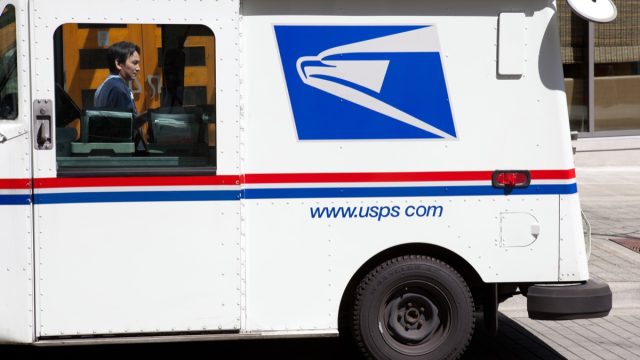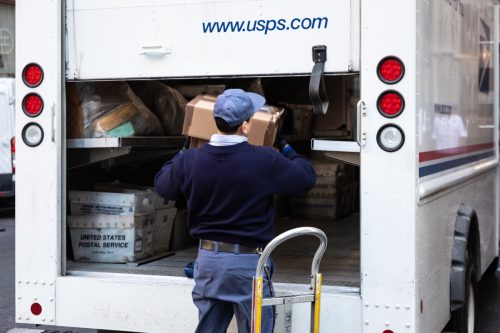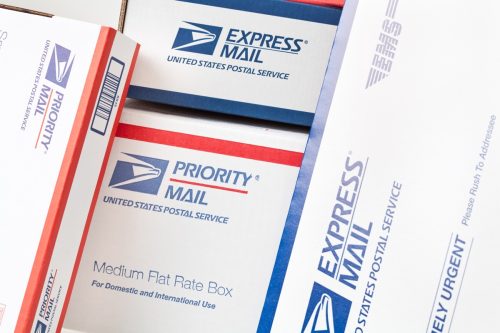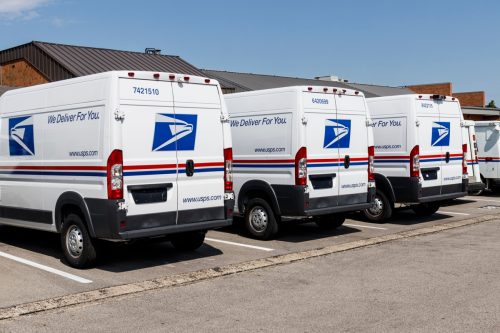USPS Tracking Is Wrong More Often Than Not—Here’s the Proof

With the risk of porch pirates and missed deliveries, many of us can’t rest after we’ve ordered something online until it is safely in our hands. It’s common to track a package from the moment it’s shipped out all the way down to the minute the delivery driver is supposed to show up at your door. But sometimes you may feel like what you’re seeing on the screen isn’t the same as what is playing out in real time—and you would be right. A new audit report indicates that the U.S. Postal Service’s (USPS) package tracking is actually wrong more often than not. Read on to see the proof of this problem.
READ THIS NEXT: USPS Is Making More Changes to Your Mail, Starting June 13.
The USPS allows customers to track their packages online.

Have a package coming in from the Postal Service? If so, you can track it online through the agency’s website. All you need is the tracking number found on your postal receipt or your email confirmation, according to the USPS. When using this service, customers may see a number of different statuses as they track their incoming packages. This may include common updates like “in transit,” “delivery status not updated,” and “delivered”; or dreaded alerts such as “notice left” and “no access,” which means your carrier was unable to successfully deliver your item.
But now some officials are warning that customers may not be able to rely on the USPS tracking information.
A new report indicates there are problems with this service.

If you’ve had trouble with the tracking information you’ve been provided, you’re likely not alone. On May 11, the Postal Service’s Office of Inspector General (OIG)—which is responsible for ensuring “efficiency, accountability, and integrity” within the USPS—released a new audit report about the agency’s package tracking service. For this investigation, the OIG reviewed tracking messages displayed on the Postal Service’s website for 500 selected packages from 25 states during different stages of the shipping process.
The findings were not favorable. Out of the 500 packages, messages for 318 of them “did not accurately reflect the location, time, and/or date of the packages” observed by the OIG. This means that the USPS tracking information was wrong for 64 percent of the shipments, according to the report. “Messages for 163 packages indicated ‘Out for Delivery’ when they were still at the post office and 46 packages lacked a status message for the facility we observed,” the OIG wrote. “Messages for 497 of 500 packages also displayed at least one non-descriptive facility name or location.”
Best Life has reached out to the USPS about this new audit report, and will update this story with its response.
RELATED: For more up-to-date information, sign up for our daily newsletter.
Several factors may result in you not getting reliable information.

As a result of its audit, the OIG has determined that the USPS does not always provide customers with “reliable information on the status and location” of their packages. This can be attributed to a combination of several factors, according to the agency’s inspector branch. One of the contributing issues is missed package scans, which may happen when a barcode is unreadable or required scans are not completed.
Another problem is that the Postal Service’s tracking service reports on “anticipated package movement” through its shipping process rather than the actual location of someone’s mail. “In other words, a system-generated message is utilized to identify the next step in a sequence of events,” the OIG explained. “For example, a package’s messaging may show ‘Out for Delivery’ or ‘In Transit’, but the package could still be at a facility.”
The OIG is advising the USPS to improve its tracking service.

Inaccurate information about the whereabouts of their shipments can cause several frustrations for customers, like lost or late packages. Due to this, the OIG says the USPS could do with improving the messaging it uses on its tracking service. “Clearly defining the status of packages on USPS.com will enhance understanding, transparency, and improve customer experience,” the report states.
But the OIG also noted that it acknowledges that the USPS can face challenges with scanning accuracy and may have a preference for reporting on anticipated movement or using non-descriptive messages. As a compromise, the inspector branch recommends that management within the Postal Service develop more status descriptions—particularly those that can “explain missing scan events and enhance explanations for messages such as for ‘Out for Delivery’, ‘In Transit’, or non-descriptive facility names on its tracking websites,” the OIG said.